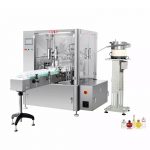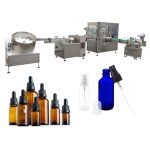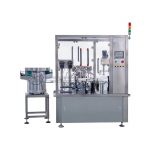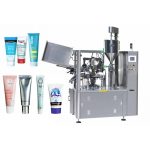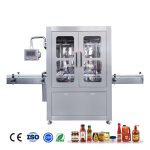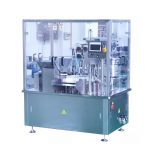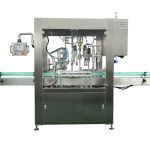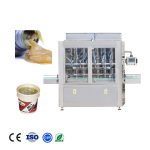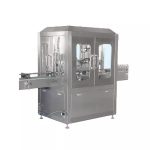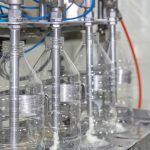A tube filling machine is a machine that is used to fill tubes with a specific product, such as toothpaste, ointments, or adhesives. These machines are typically used in the cosmetics, pharmaceutical, and food industries.
There are several types of tube filling machines, including manual, semi-automatic, and fully automatic machines. Manual tube filling machines require the operator to manually load the tubes onto the machine, while semi-automatic and fully automatic machines have automated tube loading systems. Fully automatic machines are typically the most efficient, as they can fill and seal the tubes with minimal operator intervention.
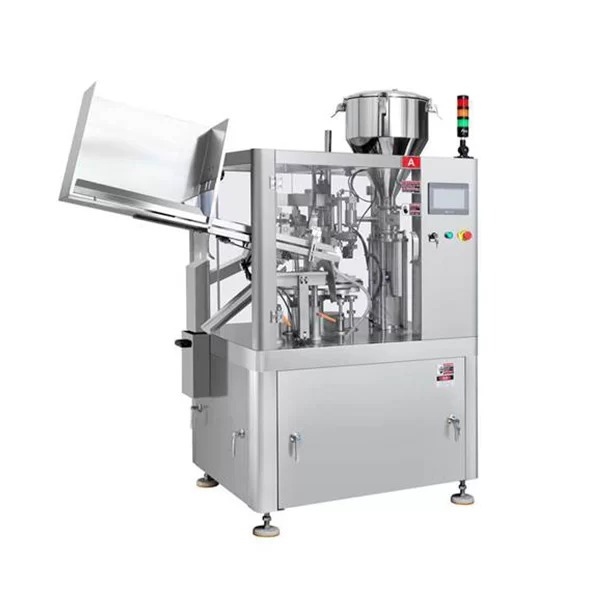
The basic process for filling tubes with a tube filling machine involves the following steps:
- Preparation: The first step in the process is to prepare the tubes and the product that will be filled into the tubes. This includes cleaning and sterilizing the tubes, as well as preparing the product according to the specific requirements of the product and the filling machine.
- Tube loading: Once the tubes and product are ready, the next step is to load the tubes onto the machine. On manual machines, the operator will typically load the tubes onto the machine one at a time. On semi-automatic and fully automatic machines, the tubes are typically loaded onto the machine using a hopper or other automated system.
- Filling: Once the tubes are loaded onto the machine, the product is dispensed into the tubes using a filling head or nozzle. The filling head is typically equipped with a piston or other mechanism that allows the operator to control the amount of product that is dispensed into each tube. The filling head also typically has a sensor or other device to ensure that the correct amount of product is dispensed into each tube.
- Sealing: After the tubes are filled with the product, they must be sealed to prevent leakage and ensure the product stays fresh. There are several methods for sealing tubes, including heat sealing, ultrasonic sealing, and mechanical sealing. The type of sealing method used will depend on the specific requirements of the product and the filling machine.
- Quality control: After the tubes are filled and sealed, they are typically inspected to ensure that they meet the required standards for quality and accuracy. This may include visual inspection, weight checks, and other types of testing to ensure that the tubes are properly filled and sealed.
- Packaging: Finally, the filled and sealed tubes are packaged for shipping or storage. This may involve placing the tubes into boxes or other containers, labeling the packages, and preparing them for transportation.
In addition to the basic process described above, many tube filling machines also have additional features and capabilities to improve efficiency and accuracy. For example, some machines may have multiple filling heads to allow for the filling of multiple tubes at the same time, or may be equipped with automated systems for checking the accuracy of the filling process.
Overall, a tube filling machine is a valuable tool for companies that need to fill large quantities of tubes with a specific product. By automating the filling and sealing process, these machines can help to reduce costs, improve efficiency, and ensure that the finished products meet the required standards for quality and accuracy.
There are several factors that can impact the performance and efficiency of a tube filling machine, including the size and shape of the tubes, the viscosity and consistency of the product being filled, and the desired filling accuracy.
One important consideration when selecting a tube filling machine is the size and shape of the tubes that will be used. Different machines are designed to accommodate different sizes and shapes of tubes, so it is important to choose a machine that is compatible with the specific tubes that will be used.
The viscosity and consistency of the product being filled can also impact the performance of the machine. Products that are very thick or highly viscous may require special filling heads or other modifications to ensure that they are dispensed accurately and efficiently. On the other hand, products that are thin or watery may require different sealing methods or other considerations to prevent leakage.
Finally, the desired filling accuracy is another important factor to consider when selecting a tube filling machine. In many industries, it is important to ensure that the correct amount of product is dispensed into each tube. This may require the use of a filling machine with a high level of accuracy and precision, or may involve the use of additional quality control measures to ensure that the filled tubes meet the required standards.
In conclusion, a tube filling machine is a specialized piece of equipment that is used to fill tubes with a specific product. These machines can be manual, semi-automatic, or fully automatic, and are used in a wide range of industries, including cosmetics, pharmaceuticals, and food processing. By automating the filling and sealing process, these machines can help to improve efficiency and accuracy, and reduce costs for companies that need to fill large quantities of tubes.

